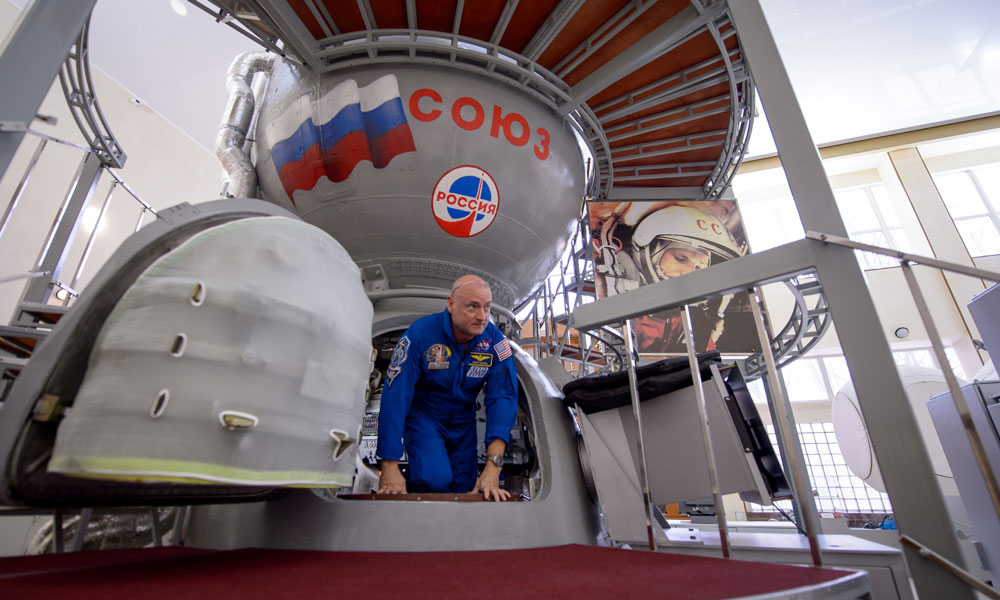
The Hard Things About Membership
Astronauts Scott and Mark Kelly say the toughest challenges are the most rewarding. For associations, here's a list of the "hard things" that will deliver membership success.
Earlier this week, a pair of astronauts offered association executives advice and inspiration on how to “do the hard things.”
As my colleague Emily Bratcher reported Sunday from the 2016 ASAE Annual Meeting & Expo in Salt Lake City, opening keynote speakers and former NASA astronauts Mark and Scott Kelly told attendees that their most rewarding achievements were also their hardest. Said Scott: “We want to talk about having a goal and having a plan with very small manageable steps, about—at times—testing the status quo, about taking risks and not being afraid to make mistakes, and about how, if you work as a team, you can accomplish anything.”
When you can do what the average association does and get 80 percent of your customers to return every year, it’s easy to get complacent.
Space travel has to be near the top of the list of the hardest things humanity has ever done, so the Kelly twins are probably a good authority on the subject.
For those onsite at the conference (unlike me, sadly), it was surely a great message to get in the right mindset for learning over the next three days. For association membership pros at large, though, it’s also an important message about getting over the hurdles that hold back membership growth and engagement.
What are the “hard things” about membership? While goals like attracting young members, conveying membership value, or getting members to renew on time are obvious answers, a lot of what is truly hard about membership work is that the difference between status quo and huge success is often a matter of a few percentage points. When you can do what the average association does and get 80 percent of your customers to return every year, it’s easy to get complacent. Getting out of that membership comfort zone, though, requires a variety of “hard things”:
Cutting benefits. Most members join for just one or a few key benefits, not 38. Can you identify which ones, and can you let go of the ones that clutter the decision to join and absorb valuable staff resources?
Testing retention strategies. It’s far easier to test a recruitment campaign with its shorter time span and fewer variables. Erik Schonher, VP at Marketing General, Inc., says a recruitment campaign can be evaluated in six or seven weeks, but a renewal series—especially with rolling, anniversary renewals—could take more than a year.
Deciding which programs should be available to nonmembers versus members only. Some benefits are so attractive that they can serve as a primary reason to join; others may be more valuable as loss leaders or as lead generators. As times change and your members’ needs evolve, how do you know for sure that you have the right mix?
Raising dues (more often). Upping the membership price tag is never easy. When it’s time to rip off the Band-Aid, are you ready to explain how the increase translates to increased member value? Or, better yet, are you willing to make dues increases a regularly scheduled practice?
Getting the data you need to serve members better. It’s hard to go a week on this blog without pointing to the underlying value of data for just about any successful membership program. Do you have what you need? Are you asking members why the join? Can you analyze members’ characteristics and behavior to predict what they need next? And are you keeping up with it every day?
Leaving the office to visit members. In the face of all of these other hard jobs, setting them down for a day every so often to get out in the field and live a day in the life of a member might feel like a chore. But how well do you know your members and the work they do? When they share their wants and needs, do you have a firsthand understanding of their day-to-day?
Forming a new membership model. If a traditional, one-size-fits-all membership model is no longer working, do you know what sort of model will? What do your members want? And when you have an answer, can you convert to it successfully?
These are the hard things for membership professionals. They might not match the challenges of space travel, but they’re hard because they take long-term commitment; they require collaboration and buy-in from fellow staff, board members, and members at large; they demand that you think and act differently about your work; and because they mean you can’t look at an 80 perecent renewal rate every year and call it success.
What challenges is your association currently facing? What are the “hard things” you have to focus on every day as a membership professional? Share your thoughts and add to this list in the comments.
Scott Kelly, shown using a Soyuz simulator prior to his flight into space last year. (NASA HQ PHOTO/Flickr)






Comments